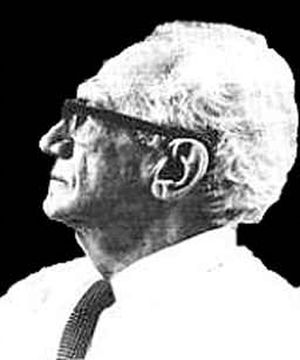William Charles Straka is an Astronomy who criticised Velikovsky in the pages of Pensée. For example, he wrote:
“I am presently an Assistant Professor of Astronomy at Boston University. Since I engage in active research in astronomy, I can be considered a scientist. Among the courses I teach is one entitled “Science and Anti-science in Astronomy.” A section of this course is concerned with Velikovsky, Whiston, Horberger, and others who held cometary or lunar catastrophe theories. ..”
“The actual evidence overwhelmingly contradicts Velikovsky. Those data which seem to support him have been selected carefully, frequently misinterpreted or over-interpreted, or sometimes misrepresented. Much of the data supposedly proving Velikovsky’s hypotheses actually applies equally well to other, simpler hypotheses. In many cases, Velikovsky’s hypotheses were simply ones considered among the alternatives by various scientists. In no case was any hypothesis which has been subsequently supported by observation exclusively his or first suggested by him. (A prime example of this is the hot Venus.)”[1]W. C. Straka, “Velikovsky: Science or Anti-Science?”, Pensée Vol. 2 No 3: (Fall 1972) “Immanuel Velikovsky Reconsidered II”
Criticisms
:Note: The Velikovsky Encyclopedia does not attempt to document all criticisms, and readers are referred to the original sources.
Straka offers several criticisms,[2]Ibid. straka for example:
- “If one calculates what sort of masses, electrical charges, or magnetic strengths would be required to do what Velikovsky asks, the numbers are orders of magnitude beyond belief. For example, if a mass the size of Venus were to come within 3 Earth radii, the time to slow the Earth down to a stop is 8000 years”
- “As for electrical interactions, requirement of only the equivalent effects implies that, in the best case of equal division of charge, the entire crust of the Earth and a like amount of a Venus-mass comet would be completely ionized”
- “The rotational energy of the Earth (1038 ergs) is a hundred million times larger than the orbital kinetic energy (1030 ergs). Furthermore, Velikovsky requires a stoppage in the period between sunrise and noon .. Hence, he requires a rate of transfer some hundred times larger than the solar nuclear energy generation rate.”
- “The first point to be made is that the “predictions” are made in such a manner as to be difficult to prove or disprove, no matter what later turns up. There are no real quantitative predictions. Velikovsky claims Venus is “hot.” how hot is “hot”?”
Counterpoints
A reply to Straka’s criticisms was made by Velikovsky in the same issue.[3]Immanuel Velikovsky, “Straka: Science or Anti-Science?” Pensée Vol. 2 No 3: (Fall 1972) “Immanuel Velikovsky Reconsidered II” For example:
- “The true figure for the rotational energy is on the order of 1036 ergs (more exactly 2.138 X 1036 ergs) and for the orbital energy 1040 ergs (more exactly 2.9 X 1040 ergs). (See C.W. Allen, Astronomical Quantities, Oxford University Press, New York, 1963.) In other words, Straka made a mistake of a trillion: the rotational (axial) kinetic energy is not a hundred million times greater than the orbital energy, but ten thousand times smaller.”
- “Straka also writes: “Similar results obtain for a magnetic interaction,” and without producing any calculation, he claims: “The magnetic field energy required is of the order of the total energy output of a supernova.” Therefore, “what Velikovsky asks” is “orders of magnitude beyond belief.”
- “In January, 1950, shortly before Worlds in Collision went to press, I had a conference with the noted cosmologist, Weizsacker, and he performed for me the required calculations, the result of which is found reproduced in my debate with the Princeton University astronomer, J.Q. Stewart (Harper’s, June, 1951). There I wrote (p. 54):”
“The magnetic field sufficient to tilt the terrestrial axis is weaker than the field necessary to change the rotational speed of the globe both could produce a similar optical effect of disturbed solar motion … Calculations show that the magnetic field in both cases would be of magnitudes which are easily achieved in the laboratory”
Physicist C.J. Ransom also commented on one of Straka’s points:
“Astronomer W. C. Straka wrote in 1972 that if Venus were incandescent (say, 2000°K) only 3500 years ago, then it would now be much hotter than the measured temperature. Later, Sagan wrote that, if Venus were 6000°K about 3500 years ago, its temperature today would be lower than the freezing point on Earth. Obviously, both honorable astronomers cannot be correct.”[4]C. J. Ransom, “A Note on the Temperature of Venus”, Kronos Vol. IV No. 2 (Winter 1978) “Scientists Confront Scientists Who Confront Velikovsky”
References
| ↑1 | W. C. Straka, “Velikovsky: Science or Anti-Science?”, Pensée Vol. 2 No 3: (Fall 1972) “Immanuel Velikovsky Reconsidered II” |
|---|---|
| ↑2 | Ibid. straka |
| ↑3 | Immanuel Velikovsky, “Straka: Science or Anti-Science?” Pensée Vol. 2 No 3: (Fall 1972) “Immanuel Velikovsky Reconsidered II” |
| ↑4 | C. J. Ransom, “A Note on the Temperature of Venus”, Kronos Vol. IV No. 2 (Winter 1978) “Scientists Confront Scientists Who Confront Velikovsky” |
